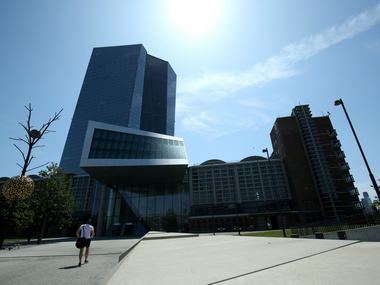Tokyo/Wellington: Negative interest rate policy—an unconventional gambit once only considered by economies with chronically low inflation such as Europe and Japan—is becoming a more attractive option for some other central banks to counter unwelcome currency rises. In Asia, central banks in economies as diverse as Australia, India and Thailand have stunned markets by cutting aggressively rates in response to the broadening fallout from the US-China trade war.
The Reserve Bank of New Zealand (RBNZ)—considered a pioneer in central bank policymaking circles since it adopted inflation-targeting nearly three decades ago—floated the possibility of negative rates last week as it, too, slashed rates by a bigger-than-expected 50 basis points and sent its currency tumbling to 3-1/2-year lows.
The fact such controversial tools are being more widely contemplated underscores the dilemma central banks across the world face, as the global slowdown forces them to go to extremes in shielding their economies from a strengthening currency. The Sino-American tariff war has hurt global supply chains and manufacturing activity, slowing growth in export-reliant Asian economies and prodding some central banks to cut rates in the hope of giving exports a boost via a weaker currency. [caption id=“attachment_7160961” align=“alignleft” width=“380”]  A man walks towards the European Central Bank (ECB) headquarters in Frankfurt, Germany, July 25, 2019. REUTERS/Ralph Orlowski - RC140AE85000[/caption] That, in turn, has stoked fears of a cycle of competitive devaluations and prompted some policymakers to think about more radical tools. “The RBNZ is clearly hitting things on the front foot. We are globally in a central bank easing cycle,” said Stuart Ive, a Wellington-based currency and bond dealer at OM Financial. “It’s not that the RBNZ’s on their own here. Everyone else is looking at exactly the same thing.” But a closer look at Europe and Japan—where negative rates are in place—shows the performance has been mixed at best. Exchange rate pressures Until recently, adopting such unconventional policy measures had been a remote idea for most central banks in fast-growing Asia, where generally higher rates gave ample room for cuts during a downturn. Indeed, before the Federal Reserve’s shift late last year to a dovish monetary policy stance, even cutting rates too quickly was considered risky as it could trigger a massive capital outflow. But trade tensions and volatile markets are forcing some Asian economies, particularly those reliant on trade, to look at ways to keep a spike in their currencies from hurting exports. A negative rate policy appears a useful tool to this end, as it helps widen the interest-rate gap with the United States and so keep their currencies from appreciating against the dollar. “I think the big way in which negative rates work is simply taking pressure off the exchange rate,” said Michael Reddell, a Wellington-based economist and former senior RBNZ official. On that measure, the policy has brought some success in Europe. Since the European Central Bank (ECB) adopted negative rates five years ago, the euro has lost just over a sixth of its value against the greenback.
But the Bank of Japan’s (BOJ) experience paints a different picture. The yen-weakening effect of its announcement was short-lived. In just five months, the yen rose nearly 20 percent against the dollar. The impact on growth and inflation has been even more mixed.
In the euro-zone, average corporate borrowing costs slipped to 1.6 percent in June from 2.8 percent at the time the ECB adopted negative rates in June 2014. Although economic growth initially boomed, it is now close to stagnating, having increased just 0.2% quarter-on-quarter in April-June. Inflation, which the ECB wants to keep below but close to 2 percent, hit a 17-month low of 1.1 percent in July, missing the target since 2013. The benefits have also been questionable in Japan, where years of heavy money-printing had already pushed rates near zero. Bank lending rates, which were at 0.80 percent when the BOJ adopted negative rates in January 2016, stood at 0.75 percent in June. Japan’s economy grew a meager 0.4 percent quarter-on-quarter in the April-June period, slower than 0.7 percent in the first three months of 2016. Annual core consumer inflation stood at 0.6 percent in June, remaining distant from the BOJ’s 2 percent target. Collateral damage The biggest impediment to adopting negative rates could be the strain they inflict on financial institutions’ margins.
The damage has been pronounced in Japan, where commercial banks have made little progress diversifying businesses beyond traditional lending. Intense competition in the overcrowded industry has forced many banks to lend at near-zero rates.
The BOJ warned in April that nearly 60 percent of regional banks could suffer net losses a decade from now if corporate borrowing keeps falling at the current trend. The political backlash could also be unforgiving. The BOJ came under criticism not just from banks but from the public, as households mistakenly thought they could be charged for their bank deposits. Officials at the Federal Reserve have also taken a dim view of negative rates as politically unpopular and likely ineffective. “There’s no consensus among central bankers on the pros and cons of unconventional steps like negative rates. The relationship between negative rates and currency moves is also unclear,” said Sayuri Shirai, a former BOJ board member who is currently professor at Japan’s Keio University. “What’s clear is that the negative impact on the banking sector is huge, while the effect in boosting aggregate demand appears to be small.”


)

)
)
)
)
)
)
)
)



